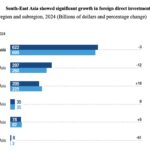In a significant shift that balances prudential regulation with growth imperatives, the Reserve Bank of India (RBI) has finalized its “Project Finance Directions, 2025,” effective from October 1. The revised framework, issued on June 19, marks a notable recalibration from the earlier draft guidelines and is widely seen as a pragmatic response to concerns voiced by lenders and infrastructure developers alike.
At the heart of the revised directions is a softened provisioning regime. The initial draft had proposed a uniform provisioning requirement of 5–7.5 percent for all under-construction projects—a move that had raised alarms about rendering project finance economically unviable for banks and other regulated entities.
The final guidelines replace this with a more calibrated structure, setting a base provision of 1 percent for infrastructure loans and 1.25 percent for commercial real estate (CRE) loans. In the event of project delays, additional provisioning will accrue quarterly—0.375 percent for infrastructure loans and 0.5625 percent for CRE loans. This translates into a cumulative provisioning of 1.5 to 2.25 percent over a one-year delay, significantly easing the capital load compared to the earlier draft.
Once projects achieve commercial operations, the provisioning requirements revert to a lower standard: 0.40 percent for infrastructure, 0.75 percent for residential CRE, and 1 percent for other CRE segments. This is a substantial reduction from the draft’s proposed 2.5 percent provisioning in some scenarios and signals regulatory recognition of the capital intensity and long gestation periods inherent in infrastructure lending.
While the base provisioning requirement is higher than the existing norm of 0.4 percent, industry experts believe the additional capital burden will be manageable. Sanjay Agrawal, Senior Director at CareEdge Ratings, estimates the impact at about 7–10 basis points for public sector banks and 3–5 basis points for private banks. The RBI’s decision to grandfather existing projects under the previous norms further smoothens the transition, shielding current portfolios from abrupt provisioning shocks.
The central bank has also addressed industry concerns around loan structuring flexibility. One key revision is the removal of the earlier proposal to cap the moratorium period at six months post the Date of Commencement of Commercial Operations (DCCO). This change is particularly significant in the context of large-scale infrastructure projects, which often face unpredictable delays. Lenders now have greater leeway to design repayment schedules that better reflect actual cash flow profiles, enhancing the financial viability of long-gestation projects.
Another important feature of the new framework is the RBI’s move to enforce lender discipline through minimum exposure thresholds. Under the revised rules, lenders must hold at least 10 percent of total debt exposure in projects up to ₹1,500 crore (around $180 million), and either 5 percent or ₹150 crore (around $18 million), whichever is higher, for larger loans. This “skin in the game” approach is designed to align interests across consortium members, foster more robust credit appraisal, and streamline decision-making—issues that have historically plagued syndicated project lending in India.
The new norms also harmonize treatment across the financial system by extending provisioning and DCCO rules to all regulated entities, including non-banking financial companies (NBFCs), urban cooperative banks (UCBs), and all-India financial institutions (AIFIs). For NBFCs that follow Indian Accounting Standards (Ind-AS), the provisioning impact is expected to be muted, as Stage 1 Expected Credit Loss (ECL) buffers already provide a comparable cushion. This alignment removes regulatory arbitrage and creates a level playing field, especially important in an increasingly interconnected credit market.
Taken together, the RBI’s revised project finance guidelines aim to enhance the resilience of India’s financial sector while facilitating credit flow to a critical part of the economy. Analysts at CareEdge believe the ECL provisioning model will mesh well with the new norms, reflecting a coordinated regulatory push towards more dynamic risk management. Crisil Ratings expects the final directions to provide a “growth fillip,” as the absence of clarity had previously stalled many funding decisions. With the rules now in place, financial institutions are expected to resume project lending, particularly for infrastructure segments aligned with the government’s public investment agenda.
The clarity on provisioning is timely, as India prepares for a projected capital expenditure outlay of ₹125–135 lakh crore ($1.5–1.6 trillion) between FY2026 and FY2030. While sectors with a history of frequent DCCO extensions may face higher risk premiums, the overall cost of credit for under-construction projects is unlikely to spike significantly. Given the strong profitability and healthy capital buffers of most Indian lenders, the system appears well-equipped to absorb the modest increase in provisioning requirements.
Ultimately, the RBI’s final project finance directions strike a careful balance—tightening norms to prevent future stress while ensuring they do not stifle credit to a sector central to India’s economic growth. By easing the provisioning burden, standardizing regulatory expectations, and reinforcing accountability among lenders, the central bank has laid the groundwork for a more resilient and growth-oriented project finance ecosystem.
Exchange rate used: ₹83 = $1 (as of June 2025)






